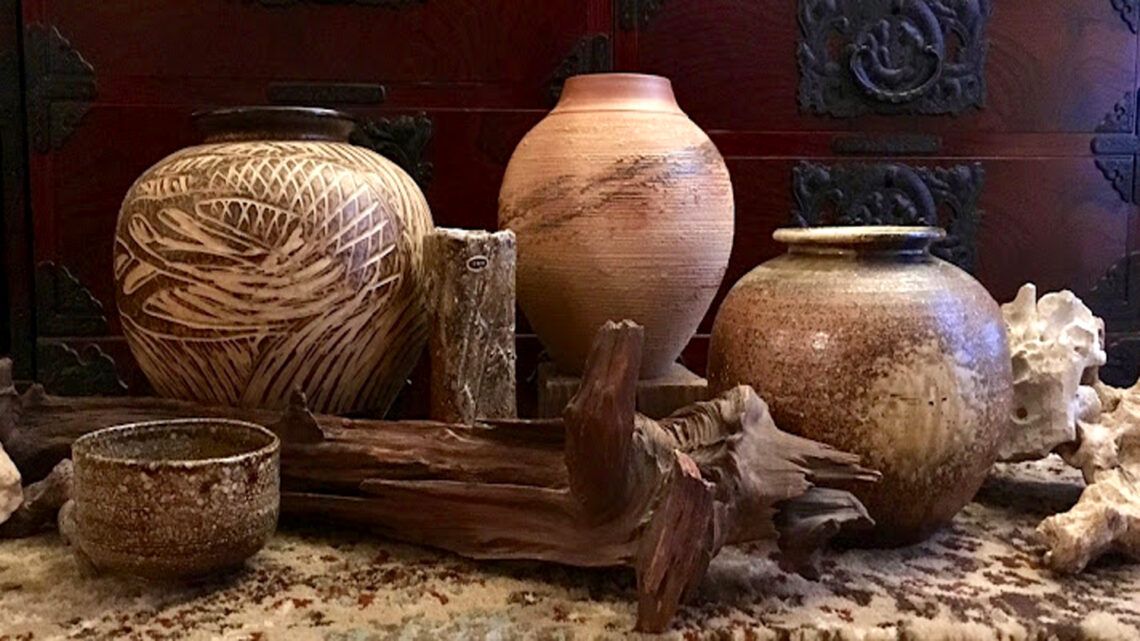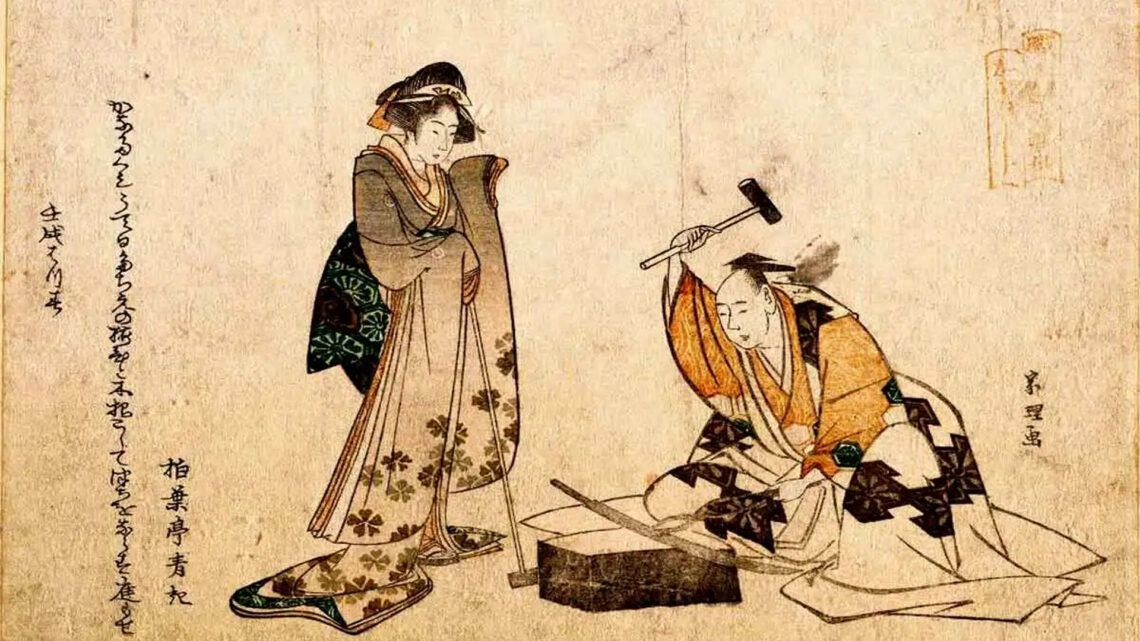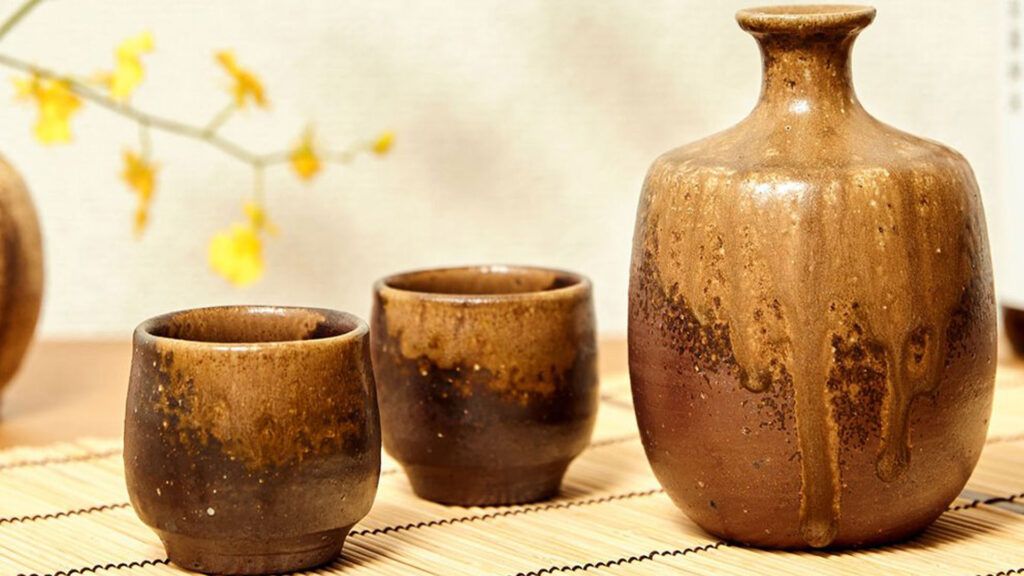
Traditional Japanese ceramic craftsmanship is a fascinating expression of Japanese culture and history. Over centuries, this craft has evolved into an art form appreciated for both its beauty and functionality. The roots of Japanese ceramic craftsmanship trace back to the Jomon period, a prehistoric era lasting from around 14,000 BCE to 300 BCE. During this time, people began shaping pots and vessels from clay, which served not only for storing food but also for ritual and cultural purposes.
One of the characteristic features of traditional Japanese ceramic craftsmanship is the use of local materials and techniques passed down from generation to generation. Various regions of Japan are known for their specific types of clay and glazes, which impart a unique identity to ceramic pieces. For example, the city of Seto in Aichi Prefecture is famous for its Seto-Yaki, while Bizen-Yaki originates from the city of Bizen in Okayama Prefecture. Each region has developed its own secrets and techniques for ceramic production, often closely tied to the natural resources and climatic conditions of the area.
Another significant aspect of traditional Japanese ceramic craftsmanship is its close connection to nature and the seasons. Many ceramic artists draw inspiration from the surrounding landscape, seasons, and changes in nature when crafting their works. This is often reflected in the patterns, shapes, and colors of the ceramics. For instance, delicate floral patterns might be used in spring, while warm earth tones might dominate in autumn. This connection to nature imbues the ceramic pieces with a deep spiritual dimension, making them an integral part of traditional Japanese aesthetics.
The production of traditional Japanese ceramics is a laborious process requiring patience, precision, and craftsmanship. Initially, the clay is prepared by kneading, shaping, and then drying it. Subsequently, the piece is fired, either in a wood kiln or a modern electric kiln, depending on the preferences of the ceramic artist and the traditional techniques of their region. After the first firing, the piece is glazed and fired again to seal the glaze and give the piece its final color and texture. This firing process may be repeated several times to achieve the desired effect.
A particular challenge in traditional Japanese ceramic craftsmanship is mastering glazing techniques. Glazes can be applied in various ways, such as dipping, spraying, or brushing, and each method produces a different texture and effect. Moreover, different types of glazes can be combined to achieve interesting effects, such as a play of colors or subtle variations in the surface. The art of glazes requires a deep understanding of the chemical reactions occurring during the firing process, as well as a keen sense of aesthetics and design.
Another important aspect of traditional Japanese ceramic craftsmanship is the role of masters and apprentices. In a long tradition of master-apprentice systems, experienced ceramic artists pass on their knowledge and skills to the next generation by taking apprentices under their wing. These apprentices often spend years learning the fundamentals of the craft before they are allowed to create their own works. This process of education and knowledge transmission helps to ensure the continuity and quality of Japanese ceramic craftsmanship while maintaining a vibrant community of artists and artisans.
Over the centuries, traditional Japanese ceramic craftsmanship has evolved and adapted, incorporating both traditional and modern influences. Nowadays, there is a wide variety of styles and techniques within Japanese ceramic craftsmanship, ranging from classical-elegant to avant-garde and experimental. However, despite this diversity, a deep appreciation for craftsmanship, aesthetics, and artistry remains a central characteristic of Japanese ceramic craftsmanship, contributing to its significance as a living cultural tradition.
However, the significance of traditional Japanese ceramic craftsmanship goes beyond its cultural and aesthetic importance. It has also played an important economic role, both in the past and present. Historically, ceramic wares were a significant trade commodity, traded not only within Japan but also exchanged with other countries. Particularly during the medieval and Edo periods, Japanese ceramic craftsmanship experienced a golden age, with certain regions becoming centers of ceramic production and exporting their products over great distances.
Even today, traditional Japanese ceramic craftsmanship is an important industry in Japan, employing millions of people and making a substantial contribution to national and international trade. The demand for high-quality Japanese ceramic wares remains strong, both in the domestic market and abroad, with collectors, art enthusiasts, and tourists alike appreciating the handcrafted treasures from Japan.
The Golden Age of Ceramic Craftsmanship
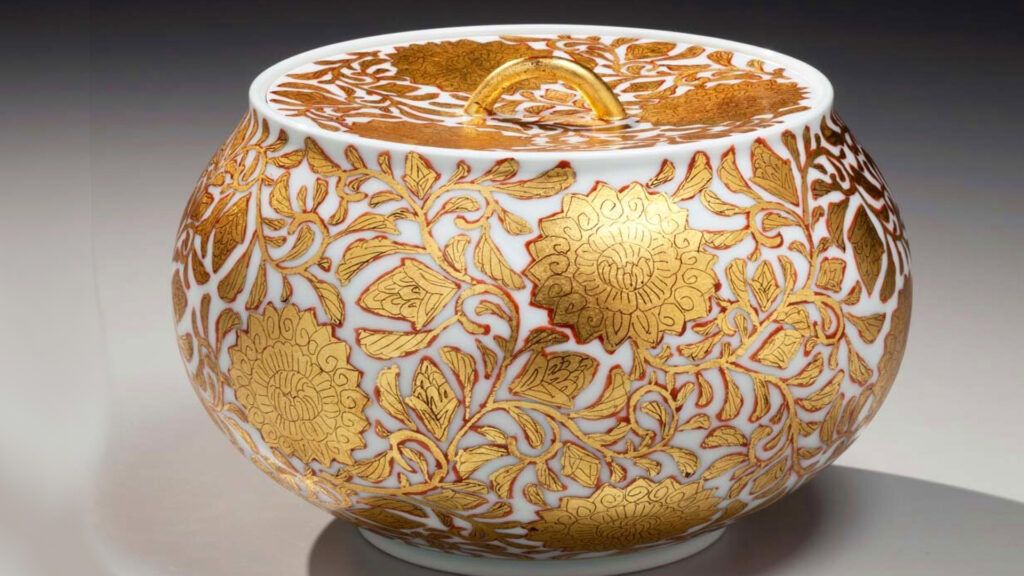
The golden age of traditional Japanese ceramic craftsmanship is a fascinating era that had a profound impact on the art and culture not only of Japan but also of the entire world. Spanning centuries, this period was characterized by masters of their craft who created ceramics of unparalleled beauty and quality with tireless dedication and artistic skill.
The origins of traditional Japanese ceramic craftsmanship date back deep into the country’s history, to the beginnings of Japanese civilization. Even in prehistoric times, people in Japan began shaping and firing clay to create simple utensils such as dishes and vessels. Over time, these early techniques evolved, and ceramic craftsmanship became a highly esteemed art form.
One of the most outstanding periods in the history of traditional Japanese ceramic craftsmanship was the Edo period (1603-1868). During this time, Japan experienced a phase of peace, stability, and economic prosperity, leading to a flourishing of the arts and crafts. Innovative techniques were developed and refined in workshops across the country, and talented artists created works of unparalleled beauty and sophistication.
One of the most famous styles to emerge during the Edo period was the Kintsugi technique, a method of repairing ceramic fragments with gold or silver. Rather than hiding the fractures, Kintsugi highlights the beauty of the flaw, transforming broken objects into artworks that tell their own unique stories. This technique became a symbol of the Wabi-Sabi aesthetic, which finds beauty in imperfection and impermanence.
In addition to Kintsugi, the Edo period saw a plethora of other styles and techniques that shaped traditional Japanese ceramic craftsmanship. One such style was Seto-Yaki, named after the city of Seto, renowned as a center of ceramic production in Japan. Seto-Yaki was characterized by its diverse glazes and decorative techniques, valued for its fine quality and versatility.
Another influential style was Karatsu-Yaki, originating from the Karatsu region in Saga Prefecture. Karatsu ceramics were known for their rustic beauty and natural simplicity. Artists utilized local clay types and traditional firing techniques to create tableware and vessels of timeless elegance.
During the Meiji period (1868-1912), traditional Japanese ceramic craftsmanship underwent a phase of modernization and innovation. With Japan’s opening to the West, new technologies and influences entered the country, transforming and expanding ceramic craftsmanship. Japanese potters began adopting Western techniques such as wheel throwing and firing in industrial kilns while still preserving and evolving their traditional methods.
In the ensuing decades, Japan established itself as a leading producer of world-class ceramics, appreciated for their exceptional quality and beauty. Japanese ceramics gained international recognition and were showcased at exhibitions and fairs worldwide.
Today, traditional Japanese ceramic craftsmanship is experiencing a renaissance as a new generation of artists and craftsmen embraces old techniques and traditions. In workshops and studios across the country, ancient craft techniques are nurtured and passed down while new approaches and innovations are developed.
While the golden age of traditional Japanese ceramic craftsmanship may be over, its influence and beauty live on in the works of today’s artists and craftsmen. Through their dedication and talent, they preserve the heritage of their ancestors and contribute to safeguarding the beauty and diversity of traditional Japanese ceramic craftsmanship for future generations.
Modern Influences on Japanese Ceramic Craft
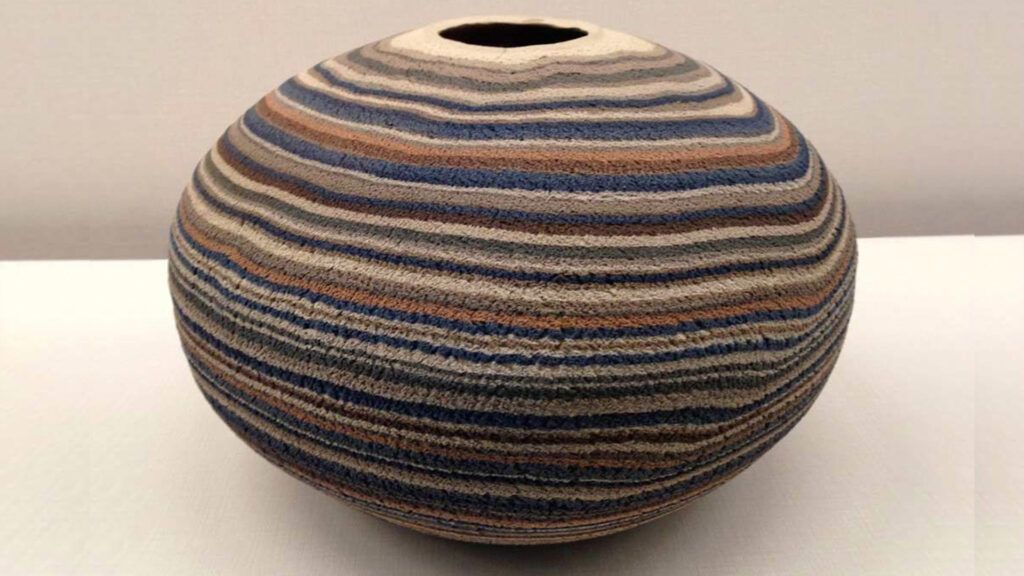
In recent decades, traditional Japanese ceramic craft has undergone a fascinating development heavily influenced by modernity. These changes not only reflect the dynamic interplay between tradition and innovation but also demonstrate how cultural artifacts can evolve in a globalized world. Modern Japan faces the challenge of preserving its rich cultural heritage while remaining open to new trends and technologies. In the context of ceramic craft, this tension has led to a variety of intriguing developments.
One of the most notable changes in traditional Japanese ceramic craft is the adoption of modern technologies and materials. While previously everything was shaped and fired by hand, modern production methods such as the use of potter’s wheels and electric kilns have increased efficiency and opened up new design possibilities. This has enabled artists to create more complex forms and express their creativity more freely.
Furthermore, globalization has brought new perspectives and inspirations to Japanese ceramic craft. International artists and designers bring fresh ideas and techniques that often merge with traditional Japanese styles and motifs. This cultural exchange has resulted in a diversity of ceramic styles appreciated both locally and internationally.
Another significant influence on modern Japanese ceramic craft is the shift in lifestyle and aesthetics within society. In an era where minimalism and sustainability are increasingly important, many ceramic artists have begun to prefer simple and functional designs. This is reflected in both the shapes and the colors and textures of the ceramics, which often emphasize natural materials and organic forms.
Despite these modern influences, traditional Japanese ceramic craft remains deeply rooted in the history and culture of the country. Many artists still adhere to old techniques and use local clay types that have been mined in their region for centuries. This connection to tradition lends their works a special authenticity and makes them sought-after collectibles both domestically and internationally.
Overall, engagement with modern influences has enriched and expanded traditional Japanese ceramic craft. It serves as a living example of how cultural traditions can evolve and adapt to remain relevant and inspiring. By combining ancient craftsmanship with new ideas and technologies, Japanese ceramic artists create unique works that enchant and fascinate the world.
Modern Japanese ceramic craft exists in a constant tension between tradition and innovation. While deeply anchored in the country’s history, it also reveals recurrent new influences and ideas. This ongoing dialogue between the old and the new not only shapes the works of the artists but also influences the perception and significance of ceramic craft in contemporary society.
One of the most significant changes that have shaped modern Japanese ceramic craft is undoubtedly the integration of technology. Whereas every phase of the manufacturing process used to be painstakingly done by hand in the past, today, machines and automated systems can handle many tasks. This has not only increased efficiency but also opened up new design possibilities that were previously unimaginable.
Another crucial influence on modern Japanese ceramic craft is globalization. By exchanging ideas and techniques with artists from around the world, the range of available styles and designs has greatly expanded. This has led to a new diversity and dynamism in the Japanese ceramic scene, encompassing both traditional and contemporary elements.
Moreover, the understanding of beauty and aesthetics in Japanese ceramic craft has also evolved. While perfection and symmetry were often valued in the past, many artists now appreciate imperfection and naturalness. This is reflected in a variety of ceramic styles that appear rustic and handmade yet possess a deep aesthetic allure.
Despite these modern influences, traditional Japanese ceramic craft remains deeply rooted in the culture and history of the country. Many artists hold onto old techniques and traditions that have been passed down for generations. This gives their works a timeless quality and makes them coveted collectibles across the globe.
Overall, engagement with modern influences has enriched and expanded Japanese ceramic craft. It serves as a vibrant example of how tradition and innovation can merge to create something new and exciting. Through the dialogue between old and new ideas, Japanese ceramic artists continue to lead contemporary craftsmanship and inspire people around the world with their unique creations.
Regional Differences in Japanese Ceramic Craft

The traditional Japanese ceramic craft is a fascinating art form that has been passed down from generation to generation for centuries. In various regions of Japan, there are a multitude of styles, techniques, and designs, each reflecting the unique cultural and geographical identity of its origin. These regional differences in Japanese ceramic craft result from a variety of factors, including local materials, historical influences, climatic conditions, and cultural traditions.
In Aichi Prefecture, for example, the city of Seto is renowned for its long tradition in the production of Seto-Yaki, a type of glazed ceramic. Seto-Yaki has its roots in the 13th century and is characterized by its subtle glaze effects and natural tones. Over the centuries, potters in Seto have developed a variety of techniques to utilize the unique properties of local clays and glazes. A distinctive feature of Seto-Yaki is the use of ash glaze, obtained through the burning of rice plant ash, which gives the ceramics a special texture.
In contrast, Ishikawa Prefecture is known for its Kutani-Yaki. Kutani ceramics are distinguished by their vibrant colors and intricate designs, often adorned with gold accents. The tradition of Kutani-Yaki dates back to the 17th century when ceramic masters from Korea brought overglaze painting techniques to the region. Since then, Kutani-Yaki has become synonymous with opulent and artistic ceramics appreciated worldwide.
Another significant region for Japanese ceramic craft is Saga Prefecture on Kyushu Island. Here, Arita-Yaki has been produced since the 17th century, often known as Imari-Yaki. Arita-Yaki is famous for its fine porcelain quality and elegant blue-and-white decor. The production of Arita-Yaki was once a closely guarded secret practiced only by selected craftsmen. Today, Arita-Yaki is known for its exquisite craftsmanship and versatility, ranging from traditional patterns to modern interpretations.
In addition to these better-known styles, there is a variety of regional ceramic traditions throughout Japan, often closely tied to local customs, festivals, and legends. For example, in Shiga Prefecture, the town of Shigaraki is famous for its rustic Shigaraki-Yaki, often roughly and irregularly shaped, exuding a natural simplicity. In Tokushima Prefecture in western Japan, Bizen-Yaki is known for its distinctive unglazed surfaces and unique coloring resulting from the special wood-firing technique.
The diversity of traditional Japanese ceramic craft reflects the rich cultural and geographical landscape of the country. Each region has its own unique features and techniques shaped by centuries of experience and innovation. Despite modern developments and changes in the world of craftsmanship, the tradition of Japanese ceramics remains deeply rooted and continues to be preserved by talented craftsmen with passion and dedication.
some examples of traditional Japanese ceramic styles include:
Mino-Yaki from Gifu Prefecture: Known for its diverse range of styles and techniques, Mino-Yaki encompasses everything from simple earthenware to intricate porcelain. One of its most famous varieties is Oribe-Yaki, characterized by its vibrant green glaze and bold designs influenced by the tea ceremony aesthetic.
Hagi-Yaki from Yamaguchi Prefecture: Hagi ware is prized for its simple yet elegant forms and distinctive crackled glaze. It originated in the early 17th century when potters fleeing civil unrest in Kyoto settled in the town of Hagi, bringing their expertise and creating a unique local pottery tradition.
Karatsu-Yaki from Saga Prefecture: Karatsu ware is known for its earthy, unassuming aesthetic and emphasis on natural materials. It often features irregular shapes and a variety of surface textures, reflecting the wabi-sabi philosophy of finding beauty in imperfection and simplicity.
Kyoto-Yaki from Kyoto Prefecture: Kyoto has been a center of ceramic production for centuries, producing a wide range of styles including Kiyomizu-Yaki, characterized by its delicate porcelain and intricate hand-painted designs, and Raku-Yaki, known for its rustic yet refined tea bowls used in the traditional Japanese tea ceremony.
These examples showcase the diversity and craftsmanship of traditional Japanese ceramics, each style reflecting the unique history, culture, and artistic sensibilities of its respective region.
Influences of Zen on Traditional Japanese Ceramic Craft
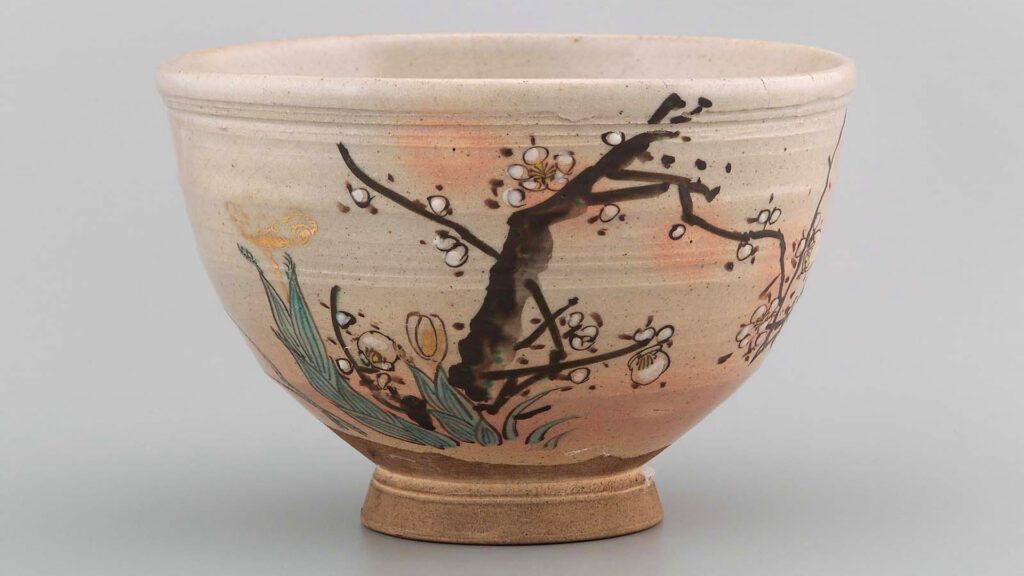
The influences of Zen on traditional Japanese ceramic craft run deep into the history and essence of Japanese culture. Zen, a spiritual practice aiming for mindfulness and enlightenment through meditation and self-realization, has played a significant role in shaping the form and aesthetics of Japanese ceramic art. This connection between Zen and ceramics is not merely superficial but permeates every facet of the craft, from production to the final shaping of artworks.
The roots of this relationship extend back to the Kamakura period (1185-1333) when Zen Buddhism took hold in Japan. Zen monks brought ceramic techniques from China, which they had learned during their study trips there. These techniques were then adopted and further developed by Japanese craftsmen, integrating the spirit of Zen into the approach and philosophy of ceramic craft.
A fundamental principle of Zen, which also finds expression in ceramic craft, is the idea of Wabi-Sabi. This aesthetic emphasizes the beauty of imperfection, irregularity, and impermanence. In the world of ceramics, this means that cracks, unevenness, and traces of the crafting process are not only acceptable but even desirable. Through these imperfections, the uniqueness of each piece is emphasized, establishing a connection to the natural world, which is so central to Zen.
The practice of ceramic making in Zen is characterized by mindfulness and concentration. Every step of the process, from kneading the clay to firing the pieces in the kiln, is carried out with full attention and precision. This focus on the here and now reflects the central teaching of Zen, to dwell in the present moment and let go of the past and future.
Another influence of Zen on Japanese ceramic art is the emphasis on simplicity and minimalism. These principles are closely related to Zen aesthetics, which aim to eliminate the superfluous and focus on the essential. In ceramics, this manifests in simple forms, natural tones, and a restraint in decoration.
Furthermore, the concept of Ma in Zen, which denotes the space between things and emphasizes the relationship between them, has also influenced the design and composition of ceramic pieces. The careful placement of empty spaces and the balance between positive and negative space are important aspects of design inspired by Zen philosophy.
In tea culture, closely linked to Zen, ceramics play a crucial role. Traditional tea bowls, teapots, and tea strainers are crafted by masters of ceramic craft and are often characterized by simple beauty and functionality. These objects are carefully chosen and cherished, and their use often becomes a meditative act reflecting the principles of Zen.
The influence of Zen on traditional Japanese ceramic craft is not only historical but also contemporary and forward-thinking. Even today, many ceramic artists and masters practice the principles of Zen in their work, and the connection between these two traditions remains vibrant and inspiring. By integrating Zen philosophy and practice into ceramic craft, Japanese masters have created a unique art form that is both aesthetically pleasing and spiritually profound.
Kintsugi – The Art of Repair of ceramics

In Japanese ceramic craftsmanship, the art of repair embodies a deep appreciation for impermanence, beauty, and the ability to transform. This tradition, known as Kintsugi or Kintsukuroi, has its roots in the philosophy of Wabi-Sabi, which emphasizes the beauty of imperfection and impermanence. Kintsugi is much more than just a repair technique; it is an artistic practice that tells a story and honors the spirit of the object.
The art of Kintsugi begins with the careful selection of high-quality materials. The base often consists of a lacquer mixture mixed with fine gold, silver, or platinum powder. This lacquer not only serves as an adhesive but also contributes to the aesthetic quality of the repair. Selecting the right powder is crucial as it influences the color and shine of the finished Kintsugi.
The actual repair requires precision and patience. The craftsman must carefully piece together the fragments of the ceramic piece and bond them with the lacquer mixture. This phase requires a deep understanding of the object’s structure and skillful hands to ensure that the repair is stable and aesthetically pleasing. Special tools such as tweezers and fine brushes are often used to handle the tiny fractures and apply the lacquer precisely.
During the repair process, the fracture lines are not concealed but highlighted. The gold powder in the lacquer accentuates the lines of the break, giving the object a unique aesthetic. These visible scars remind us of the object’s history and imbue it with new value. Instead of hiding the flaw, Kintsugi celebrates vulnerability and the repair process as an integral part of an object’s lifespan.
The art of Kintsugi transcends mere repair and symbolizes deep philosophical concepts. It teaches us to accept impermanence and recognize beauty in imperfection. By not viewing fractures as defects but as part of an object’s story, Kintsugi imparts an important lesson about appreciation and respect for age and experience.
Another fascinating aspect of Kintsugi is its connection to Japanese culture and history. The practice has its roots in Japanese aesthetics and philosophy, reflecting the deep connection of the Japanese people with nature and tradition. The use of gold in the repair symbolizes not only beauty but also spiritual wealth and enlightenment.
Kintsugi has also gained significance in the modern art and design world. In an age of mass production and disposable culture, Kintsugi reminds us to value craftsmanship and individuality. Many artists and designers today incorporate Kintsugi-inspired techniques into their work to create unique and meaningful pieces.
The art of repair in Japanese ceramic craftsmanship is not just a skill but a philosophical and cultural practice that offers profound insights into the nature of life and beauty. By emphasizing impermanence and transformation, Kintsugi reminds us that fractures and injuries do not mean the end but mark the beginning of a new chapter.
My Conclusion:
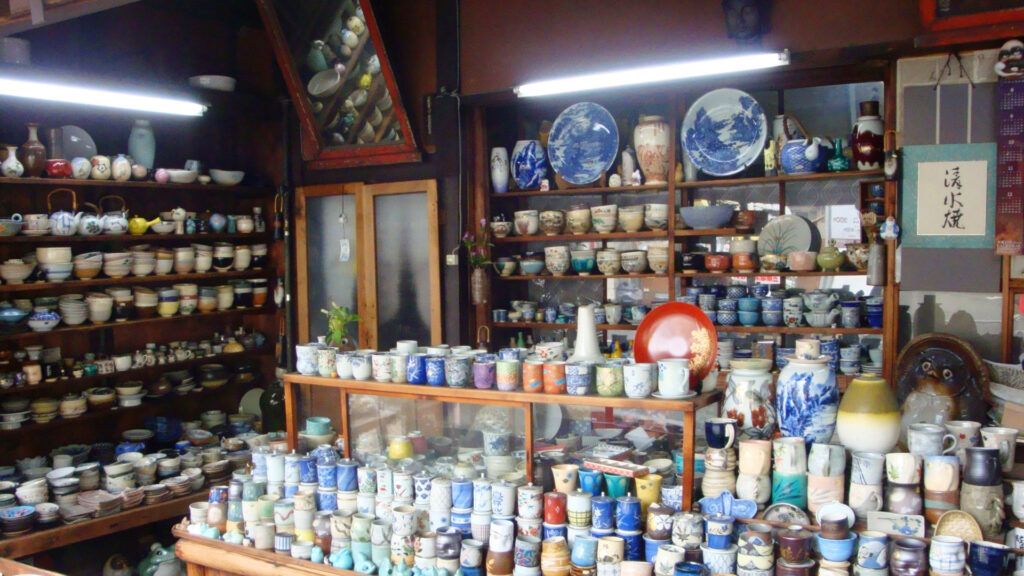
Japanese ceramic craftsmanship is a fascinating art form that can look back on a long and rich tradition. In my conclusion on this topic, I would like to acknowledge the beauty, history, and craftsmanship that distinguish Japanese ceramic craftsmanship.
First and foremost, it is important to understand the significance of ceramics in Japanese culture. Ceramics have a long tradition in Japan and play a significant role in various aspects of daily life, whether in the tea ceremony, the art of flower arranging Ikebana, or simply as aesthetic elements in living spaces and gardens. The diversity of applications and the appreciation for ceramics are reflected in the breadth and depth of Japanese ceramic craftsmanship.
An outstanding feature of Japanese ceramic craftsmanship is its close connection to nature. Many ceramic artists draw inspiration from the natural environment and use local clay and glaze materials, often derived from minerals found near their workshops. This connection to nature imparts an organic quality to the pieces and makes each one unique.
Another important aspect of Japanese ceramic craftsmanship is the significance of craftsmanship and artisanal mastery. Many Japanese ceramicists spend years perfecting their skills and learning traditional techniques, often passed down through generations. The practice of master-apprentice relationships is widespread and helps ensure that the knowledge and skills of ceramic craftsmanship remain alive.
Furthermore, the aesthetics of Japanese ceramic craftsmanship are remarkable. From the simple beauty of Bizen-Yaki to the elaborate decoration of Kutani-Yaki, there is a variety of styles and techniques that showcase the diversity and creativity of the Japanese ceramic tradition. Whether it’s minimalist tea bowls or intricately adorned vases, each piece exudes a special elegance and sophistication.
In my conclusion on Japanese ceramic craftsmanship, I would like to emphasize that it is much more than just manual skill – it is a form of art deeply rooted in Japanese culture and serves as a rich source of inspiration and admiration. The beauty, history, and artisanal mastery of Japanese ceramic craftsmanship deserve to be appreciated and preserved so that they can continue to inspire generations of people around the world in the future.
FOR MORE READ MY BOOK: TRADITIONAL CRAFTSMANSHIP IN JAPAN

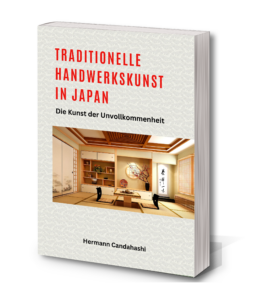
dear readers, like everything created, this book is subject to the principle of wabi-sabi and cannot shed light on all facets and characteristics of this vast area of japanese traditions. nevertheless, it may be suitable to inspire you on a further search for aspects of these fascinating art forms. if i succeed in doing this with you, i will have achieved my goal.
japanese craftsmanship has the unique ability to combine art and functionality. it ranges from the traditional tea ceremony to intricately crafted ceramics, from finely worked wood carvings to stunning textiles. these traditions are passed down from generation to generation and are not only an expression of skill, but also of deep cultural and religious significance. in them, imperfection is not seen as a failure, as it is in western countries, but as a path to a rarely achieved perfection.
japanese craftsmanship is not only a legacy of the past, but also a living heritage that is constantly evolving. modern artisans bring their own creativity to the tradition, creating innovative works that bridge the gap between the past and the future. this synergy between tradition and modernity makes japanese craftsmanship a fascinating and vibrant part of japanese culture…
(available in english and german language)

